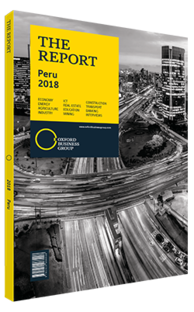Surfs up: With 3080 km of coastline and a major international contest in the works, the future looks bright for the sport
Known as the sport of kings due to its claimed royal Hawaiian origins, surfing has become as intrinsic to Peruvian culture as ceviche, pisco or creole music. Historical evidence suggests that between 3500 to 4000 years ago the Mochica and Chimú cultures were the first, in what today is known as Peru, to incorporate the Pacific Ocean into their culture, through transport, fishing and ritual practice. Waves were a common motif in the religious iconography, textiles, friezes and ceramics of both of these northern Peruvian cultures.
According to historian Enrique Amayo Zevallos, the first people to ride waves were fishermen from these societies, who built lightweight rafts made out of totora. Around 1200 years ago cultures like the Huaco, Lambayeque, Chimú and Inca developed a practice of racing from the Peruvian island of Guañape to the coast carrying an egg while using a similar raft to surf the waves, according to the historian José Antonio del Busto Durthurburu. The winner would then be welcomed with an alcohol and wachuma feast, a traditional hallucinogen popularly known today as San Pedro. It was not until the 15th century, when the Incan Túpac Yupanqui departed the Peruvian coast to reach Polynesia with 50 sailors, that these wave-riding traditions became more widespread. After Hawaii was colonised by the Polynesians, the practice evolved into a ritual undertaken by Hawaiian kings and high-ranking members of the military using heavy wooden boards.
MODERN ERA: Several centuries passed before the first Hawaiian surfboards arrived in Peru. Their introduction is widely accredited to Carlos Dogny, a Peruvian who settled in Hawaii in 1937, at a time when the Hawaiian ritual was regaining popularity. It was there that Dogny met Duke Kahanamoku at Waikiki Beach, an Olympic swimmer and indigenous promoter of the sport. After learning the practice from him, Dogny returned to Peru in 1941, carrying with him a Hawaiian board. In Lima, he founded the first surfing club in the district of Miraflores in 1942, known as Club Waikiki, and it did not take long for it to become a favourite past time for many in the country. In the 1960s Peruvian surfers such as Eduardo Arena, Héctor Velarde, Miguel Plaza, Joaquín Miro Quesada and Felipe Pomar began to win important international competitions. Following this, surfers such as Sofía Mulanovich Aljovín (World Surf League World Champion in 2004), Magoo de la Rosa (Grand Master World Champion in 2007) and Analí Gómez (International Surfing Association World Champion in 2014), among others, have continued the legacy. Furthermore, a new generation of practitioners led by Javier Swayne, Gabriel Villarán, Gabriel Aramburú and Álvaro Malpartida has emerged, with the Peruvian national team winning the International Surfing Association (ISA) World Surfing Games in 2016.
GROWING SECTOR: According to Karin Sierralta, executive director of the National Board Sports Federation (FENTA), surfing and surfing tourism generate $25m and $45m annually, respectively, on a global scale. In Peru there are 150,000 federated surfers, although currently only 35 are sponsored by private funds and 22 by the Peruvian Institute of Sport at a national level. Furthermore, seven ISA world titles have been held in Peru, and FENTA is part of both the Latin American circuit and the world circuit of the World Surf League.
INTERNATIONAL STANDING: The sport is set for a major boost with the construction of the Pan American Surf Centre in Punta Rocas in preparation for the Pan American Games in 2019. “We are competing at Punta Rocas, one of Peru’s best and most difficult breaks,” Carlos Neuhaus, president of the 2019 Pan American Games and former president of FENTA, told OBG. “Our surfers have the advantage of being familiar with the challenges that this break poses.” The country hopes to gain 45 medals in the contest. The regional games will serve as a precursor to the Tokyo 2020 Olympics, which will include surfing for the first time in its history. Both of these events provide the country with the chance to develop its international standing in the sport.
You have reached the limit of premium articles you can view for free.
Choose from the options below to purchase print or digital editions of our Reports. You can also purchase a website subscription giving you unlimited access to all of our Reports online for 12 months.
If you have already purchased this Report or have a website subscription, please login to continue.

